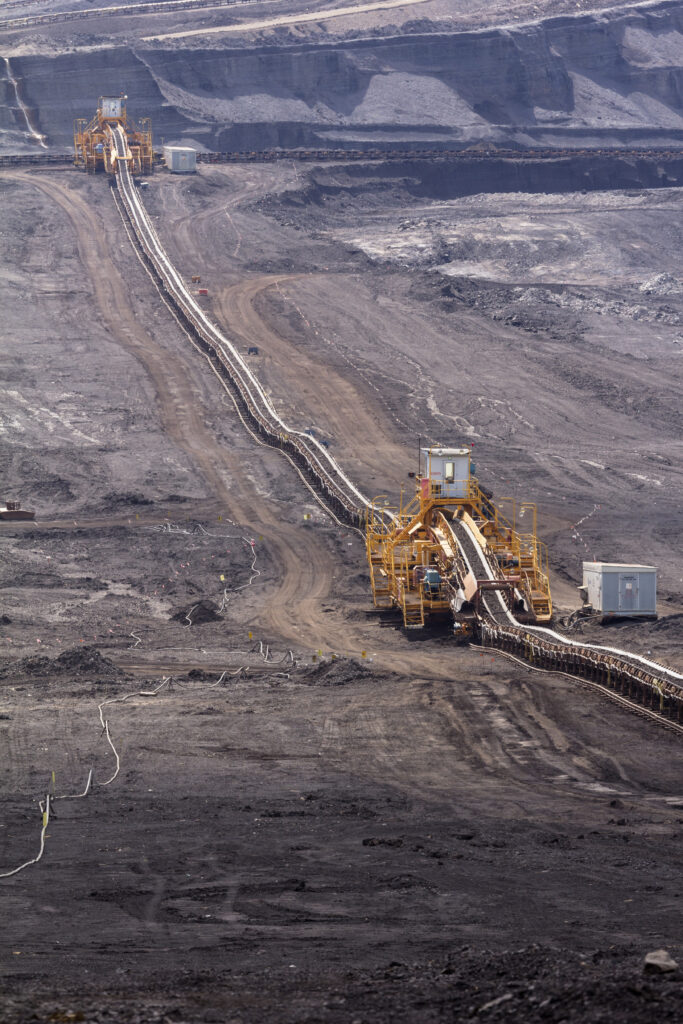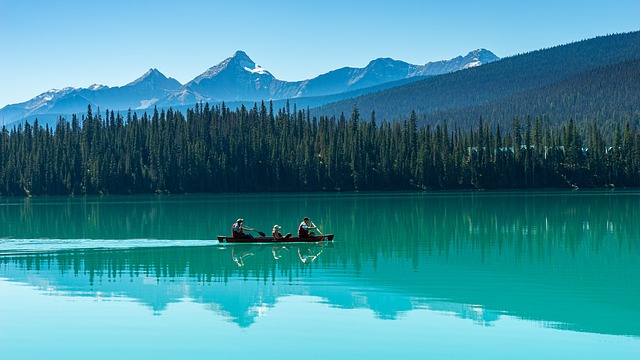Economic Profile of Alberta:
Alberta, a province known for its abundant natural resources and economic dynamism, presents a multifaceted economic profile with various opportunities and challenges.
Key Industries:

Energy Sector:
- The cornerstone of Alberta’s economy, the energy sector encompasses oil and gas extraction, refining, and distribution. The province’s vast oil sands and natural gas reserves contribute significantly to both provincial and national energy production.
Agriculture and Agribusiness:
- Alberta boasts a robust agricultural sector, producing a diverse range of crops and livestock. Agribusiness activities, including food processing and distribution, contribute to the provincial economy.
Technology and Innovation:
- Alberta’s technology sector is burgeoning, with a focus on artificial intelligence, clean technology, and digital innovation. The presence of tech hubs and research institutions fosters entrepreneurship and technological advancements.
Tourism and Hospitality:
- The province’s natural beauty, including the Rocky Mountains and national parks, attracts tourists. Tourism-related activities, such as outdoor recreation and hospitality services, contribute to Alberta’s economic diversity.
Forestry and Mining:
- Forestry and mining activities play a role in Alberta’s economic landscape, with timber production, coal mining, and mineral extraction contributing to the provincial GDP.

Employment:
Energy Jobs:
- Employment opportunities in the energy sector span a range of roles, including engineers, technicians, and support staff involved in exploration, extraction, and refining.
Agricultural Workforce:
- Alberta’s agricultural sector provides jobs in farming, ranching, food processing, and agribusiness, supporting rural communities and contributing to the province’s food supply.
Technology Jobs:
- The growing technology sector creates employment opportunities in software development, data analytics, and research roles, attracting talent and diversifying the workforce.
Tourism and Hospitality Jobs:
- The tourism and hospitality industry generates employment in areas such as accommodation, food services, and recreational activities, particularly in regions with high tourist traffic.
Trade and Transportation:
- Jobs in trade, logistics, and transportation are significant, given Alberta’s role as a major exporter of energy resources and agricultural products.

Opportunities:
Diversification Efforts:
- Continued efforts to diversify the economy beyond traditional sectors, with a focus on technology, clean energy, and innovation, present opportunities for sustainable growth.
Renewable Energy Transition:
- Embracing the global transition to renewable energy sources offers opportunities for investment in solar, wind, and other sustainable technologies, reducing the province’s reliance on fossil fuels.
Technology and Innovation Hubs:
- Developing and expanding technology and innovation hubs can attract talent, foster entrepreneurship, and position Alberta as a leader in emerging industries.
International Trade:
- Strengthening international trade partnerships, particularly in the export of energy products and agricultural goods, can open new markets and increase economic resilience.
Challenges:
Energy Price Volatility:
- Alberta’s economy is heavily influenced by fluctuations in global energy prices, making it vulnerable to market volatility and impacting government revenues.
Environmental Sustainability:
- Balancing economic development with environmental sustainability is a challenge, especially in the context of resource extraction. Addressing environmental concerns is crucial for long-term viability.
Market Access for Energy Products:
- Challenges related to market access for Alberta’s energy products, including pipeline constraints, can limit the province’s ability to reach global markets.
Workforce Transition:
- As the economy evolves, there is a need for workforce transition and upskilling to match the demands of emerging industries, particularly in the technology and renewable energy sectors.
Economic Development Initiatives:
Technology and Innovation Investments:
- Strategic investments in technology and innovation, including research and development funding, can accelerate the growth of knowledge-based industries.
Infrastructure Development:
- Continued investments in infrastructure, including transportation and technology, are essential for economic development and attracting investment.
Skills Training and Education:
- Prioritizing skills training and education programs that align with the needs of emerging industries ensures a skilled workforce ready for the jobs of the future.
Sustainable Development and Environmental Stewardship:
Alberta recognizes the importance of sustainable development and environmental stewardship in shaping its economic future.
- Renewable Energy Transition: Initiatives to transition towards renewable energy sources, such as wind and solar, demonstrate a commitment to reducing carbon emissions and contributing to the global shift towards sustainable energy practices.
- Carbon Capture and Storage (CCS): Alberta’s exploration of CCS technologies aligns with efforts to mitigate the environmental impact of the energy sector. Investments in CCS contribute to cleaner energy production and demonstrate a proactive approach to environmental challenges.
- Conservation and Biodiversity: Balancing economic development with conservation efforts is crucial. Alberta’s commitment to preserving biodiversity and implementing conservation measures supports long-term ecological sustainability.
Indigenous Partnerships and Economic Inclusion:
Recognizing the importance of Indigenous communities in Alberta’s economic landscape is fundamental to fostering inclusive and sustainable growth.
- Partnerships and Consultation: Collaborative efforts with Indigenous communities in resource development projects, ensuring meaningful consultation and benefit-sharing, contribute to economic inclusion and respect for Indigenous rights.
- Capacity Building: Supporting Indigenous entrepreneurship, education, and skills development enhances economic opportunities within Indigenous communities, fostering self-determination and sustainable economic growth.
International Trade and Market Diversification:
Exploring new markets and diversifying international trade relationships are essential components of Alberta’s economic strategy.
- Trade Agreements: Engaging in trade agreements and partnerships with diverse economies can reduce dependency on specific markets, providing stability and new opportunities for Alberta’s exports.
- Value-Added Exports: Encouraging the development of value-added industries enhances the province’s competitiveness in global markets, moving beyond raw resource exports and creating higher-value products.
Continued Education and Workforce Development:
Alberta’s commitment to education and workforce development ensures a skilled and adaptable workforce ready for the challenges of the 21st century.
- Skills Training Programs: Implementing targeted skills training programs in collaboration with industries ensures that the workforce remains agile, equipped with the skills demanded by evolving sectors such as technology, healthcare, and renewable energy.
- Higher Education Investments: Continued investments in higher education institutions foster research, innovation, and the development of specialized talent, contributing to the province’s economic competitiveness.
Conclusion:
Alberta’s economic profile reflects a province with a rich resource base and a commitment to adapting to a changing global landscape. Leveraging opportunities in diversification, technology, and sustainable practices while addressing challenges will be crucial for ensuring Alberta’s economic resilience and long-term prosperity. Ongoing collaboration between government, industries, and educational institutions is key to navigating the evolving economic landscape successfully.
Alberta’s economic journey is marked by resilience, adaptability, and a commitment to sustainable practices. By capitalizing on opportunities in technology, renewable energy, and international trade, while proactively addressing challenges related to environmental impact and workforce transition, Alberta is poised for continued economic success. The province’s ability to navigate the complexities of a changing global landscape will be enhanced through strategic partnerships, inclusive policies, and a forward-thinking approach to economic development.
Alberta’s Urban Centres
Certainly, here’s an overview of the top 11 urban centers in Alberta, including their name, location, approximate population (as of my last knowledge update in January 2022), main industries, and economic development contact information:
Calgary:
- Location: Southern Alberta
- Population: Over 1.3 million (as of 2021)
- Main Industries: Energy, finance, technology, tourism.
- Economic Development Contact: Calgary Economic Development
- Contact Information: +1 403-221-7800
Edmonton:
- Location: Central Alberta
- Population: Over 1 million (as of 2021)
- Main Industries: Energy, government services, healthcare, technology, manufacturing.
- Economic Development Contact: Economic Development Edmonton
- Contact Information: +1 780-496-5300
Red Deer:
- Location: Central Alberta
- Population: Around 103,588 (as of 2021)
- Main Industries: Oil and gas, agriculture, manufacturing, healthcare.
- Economic Development Contact: City of Red Deer – Economic Development
- Contact Information: +1 403-342-8106
Lethbridge:
- Location: Southern Alberta
- Population: Around 101,482 (as of 2021)
- Main Industries: Agriculture, agribusiness, education, healthcare.
- Economic Development Contact: Economic Development Lethbridge
- Contact Information: +1 403-331-0022
St. Albert:
- Location: Central Alberta
- Population: Around 71,859 (as of 2021)
- Main Industries: Retail, healthcare, education, technology.
- Economic Development Contact: City of St. Albert – Economic Development
- Contact Information: +1 780-459-1631
Medicine Hat:
- Location: Southern Alberta
- Population: Around 67,893 (as of 2021)
- Main Industries: Natural gas, manufacturing, healthcare, agriculture.
- Economic Development Contact: Invest Medicine Hat
- Contact Information: +1 403-529-8148
Grande Prairie:
- Location: Northern Alberta
- Population: Around 69,088 (as of 2021)
- Main Industries: Oil and gas, forestry, agriculture, healthcare.
- Economic Development Contact: City of Grande Prairie – Economic Development
- Contact Information: +1 780-538-0315
Airdrie:
- Location: Southern Alberta
- Population: Around 82,902 (as of 2021)
- Main Industries: Retail, construction, manufacturing, technology.
- Economic Development Contact: City of Airdrie – Economic Development
- Contact Information: Not specified on the website.
Spruce Grove:
- Location: Central Alberta
- Population: Around 42,466 (as of 2021)
- Main Industries: Retail, construction, manufacturing, healthcare.
- Economic Development Contact: City of Spruce Grove – Economic & Business Development
- Contact Information: +1 780-962-2616
Lloydminster:
- Location: Bordering Alberta and Saskatchewan
- Population: Around 32,500 (as of 2021)
- Main Industries: Oil and gas, agriculture, manufacturing.
- Economic Development Contact: City of Lloydminster – Economic Development
- Contact Information: +1 780-875-6184
Fort McMurray:
- Location: Northern Alberta
- Population: Around 76,797 (as of 2021)
- Main Industries: Oil sands, oil and gas, construction, transportation.
- Economic Development Contact: RMWB – Economic Development
- Contact Information: +1 780-799-8660
Please note that contact information is subject to change, and it’s advisable to check the respective official websites or contact the municipalities directly for the most up-to-date details.
Alberta’s Rural Regions
Alberta is divided into several regions, each encompassing multiple rural areas. Here’s an overview of some key rural regions in Alberta, including their names, main industries, and relevant economic development contacts:
Community Futures Offices
Community Futures Alberta Network supports 27 regional offices for Regional Economic Development Boundary lines overlap other regional jurisdictions:
Community Futures Network of Alberta
Box 753 – Cochrane, AB T4C 1A9
T: 403-851-9995
Toll free: 1-877-482-3672
Community Futures Network of Alberta
Southern Alberta:
- Location: Includes areas like Lethbridge, Medicine Hat, and surrounding regions.
- Approximate Population: Varies across municipalities.
- Main Industries: Agriculture, agribusiness, energy, healthcare.
- Regional Economic Development: Alberta SouthWest Regional Alliance
- Contact Information: Contact details may vary by municipality.
Central Alberta:
- Location: Encompasses areas like Red Deer, Sylvan Lake, and surrounding regions.
- Main Industries: Agriculture, oil and gas, manufacturing, healthcare.
- Regional Economic Development: Central Alberta Economic Partnership (CAEP)
- Contact Information: Contact details may vary by municipality.
Northern Alberta:
- Location: Includes areas like Grande Prairie, Fort McMurray, and surrounding regions.
- Main Industries: Oil and gas, forestry, agriculture, healthcare.
- Regional Economic Development: Community Futures Wood Buffalo
- Contact Information: Contact details may vary by municipality.
Northeast Alberta:
- Location: Covers areas like Lloydminster, Wainwright, and surrounding regions.
- Main Industries: Agriculture, oil and gas, manufacturing.
- Regional Economic Development: Alberta HUB
- Contact Information: Contact details may vary by municipality.
West Central Alberta:
- Location: Encompasses areas like Jasper, Hinton, and surrounding regions.
- Main Industries: Tourism, forestry, agriculture.
- Regional Economic Development: Community Futures West Yellowhead
- Contact Information: Contact details may vary by municipality.
Peace Country:
- Location: Covers areas in the northwest – Peace River region.
- Main Industries: Agriculture, oil and gas, forestry.
- Regional Economic Development: Peace Country Economic Development Alliance
- Contact Information: Contact details may vary by municipality.
Please note that contact information for economic development in rural regions can vary widely across municipalities. It’s recommended to visit the respective regional economic development websites or contact local municipal offices for the most up-to-date and accurate information.
